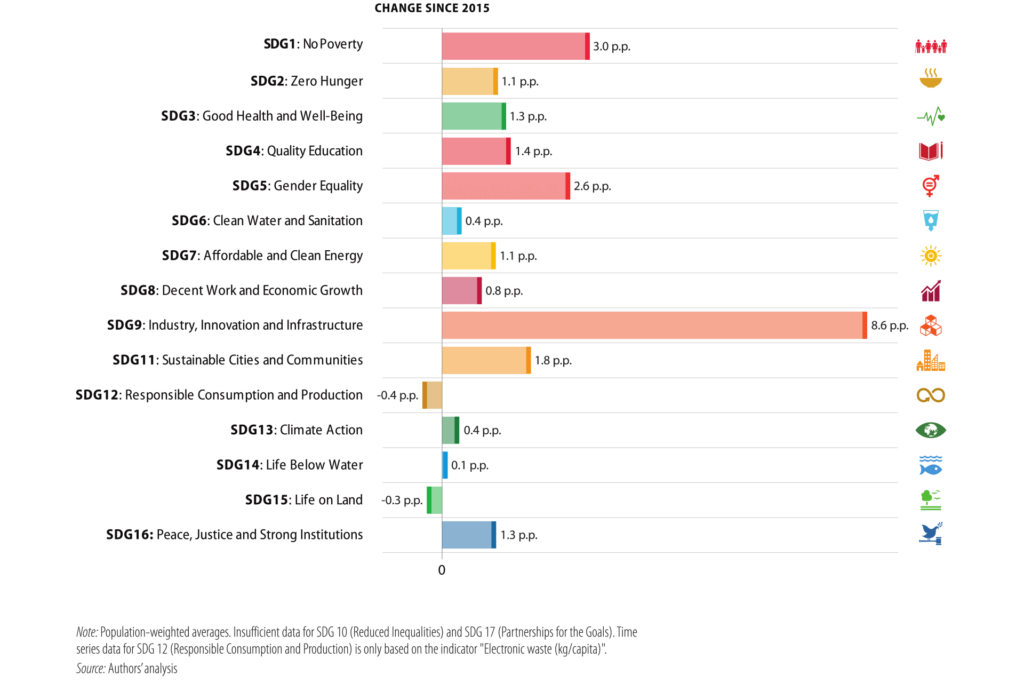Reflections on Sustainable Development and Circular Economy
The UN 2030 Agenda for Sustainable Development, renowned for its 17 Sustainable Development Goals, fails to make explicit reference to the words ‘circular’ or ‘economy’. Is it no surprise then, that SDG 12 on Responsible Consumption and Production, appears as far away as ever?
The words ‘sustainable development’ are far more common in the UN resolution adopted by 193 countries in September 2015. And while sustainable development and circularity are often mentioned in the same breath, they are in fact very different – something reflected in the world’s progress towards the SDGs.
Incidentally in May 2015, before the adoption of the UN resolution, Pope Francis presented his second Encyclical Letter Laudato Si’ entitled ‘On care for our common home.’ Unlike the UN resolution, he did in fact mention circular concepts. Upon reflecting on the cyclical workings of nature, he concludes that “Our industrial system, at the end of its cycle of production and consumption, has not developed the capacity to absorb and reuse waste and by-products. We have not yet managed to adopt a circular model of production capable of preserving resources for present and future generations, while limiting as much as possible the use of nonrenewable resources, moderating their consumption, maximizing their efficient use, reusing and recycling them.”
In Laudato Si’ the Pope not only laments environmental degradation and critiques consumerism but also the alliance between the economy and technology which “ends up sidelining anything unrelated to its immediate interests.” When referring to various kinds of pollution and how to address them, he condemns the fact that technology is all too often linked to business interests and “proves incapable of seeing the mysterious network of relations between things and so sometimes solves one problem only to create others.”
Perhaps these reflections can go some way to explain why, to date, the least progress towards all SDGs has been made on SDG 12 on responsible consumption and production – which for example calls especially upon large and transnational companies, to “adopt sustainable practices” or to achieve, by 2030,“ sustainable management and efficient use of natural resources.” The question is: will this change in the eight remaining years towards 2030, and what more can be done?
Progress in the world for each SDG since 2015 in percentage points

EU ambiguity delays progress
While acknowledgement of circular concepts is a start, it is only a first step towards progress and requires clear and concise planning and action. Despite acting as one of the leaders in promoting the circular economy with policies existing as early as 2015, PhD researcher from the CRESTING project, Martin Calisto-Friant, explains that the EU’s approach to the circular economy is rather ambiguous: “While the EU’s circular economy policies are currently more ambitious than what other key powers like the US, Canada and Australia are doing, they are still far from being transformative from a sustainability and circular society perspective.”
His research on the discourses and policies of the circular economy in the EU has identified that the European Commission’s directives and regulations on circular economy remain focused on improving resource efficiency rather than reducing resource use and negative socio-ecological impacts.
New recycling targets, restrictions on some problematic single-use plastics, and repairability and recyclability requirements for large electronic appliances are steps in the right direction, while these policies are focused on technological change and innovation rather than transforming the significant overconsumption and overproduction of goods and services in the EU.
“On average, Europeans overshoot planetary resource use and greenhouse gas emissions by about 5 times their fair share’, says Calisto-Friant, “the technocentric policies of the EU will thus do more towards improving European economic competitiveness in the recycling and recovery industry than actually reducing the resource use and ecological footprint of the European economy.”
Overconsumption, and overproduction: the elephants in the room?
On a global level, similar analyses are presented. In April 2020, UN Secretary- General Antonio Gutierrez referred to consumption and production as “a driving force of the global economy” while they also “… rely on the use of the natural environment and resources in a model that continues to lead to destructive impacts on the planet.” His official UN Report, ‘Progress towards the Sustainable Development Goals’ states that “domestic material consumption per capita in Europe and Northern America is still 40% higher than the global average, indicating the need to enhance resource efficiency and [other] practices to reduce consumption in the future …”
While data clearly shows the need to shift from a linear economy to one of less resource use and increased circularity, such statements from the UN indicate the ongoing friction between a growth-dependent global economy and the need, as many believe, for less consumption and less resource-use. The question now is whether this is just friction or simply incompatibility – either way a significant shift in mindset is required for all the SDGs to be achieved.
